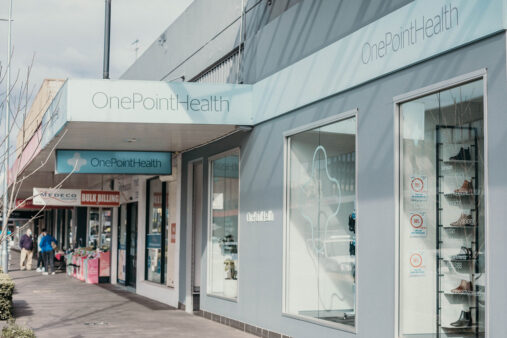At OnePointHealth Penrith, we offer services for the treatment of lymphoedema through our Remedial massage therapist Patrick Celeban who is a Casely-Smith certified lymphoedema practitioner.
What is lymphoedema and the lymphatic system?
The lymphatic system is basically referred to as the garbage truck of the human body, due to its function in collecting excess fluid from our bodily tissues via the lymphatic capillaries and gradually transporting it to the bloodstream. Lymph nodes are small, rounded glands that drain some of the water in the lymph fluid back into the bloodstream before it is moved onto another set of lymph nodes. Fluid that does not drain from the tissues and builds up, leads to swelling which overloads the lymphatics system. This can then build up further and can eventually cause irreversible damage to the lymphatic vessels. This is called lymphoedema, a region of lymphatics that can no longer drain fluid efficiently. Some common causes of lymphoedema are…
- Chemotherapy or radiation from cancer treatment which can cause excessive scar tissue to build up in the tissue spaces and obstruct lymph flow.
- Lymph node removal from cancer surgery that decreases the uptake of fluid from the tissue spaces.
- Chronic venous insufficiency like advanced varicose veins. The increased blood pressure in the veins can push too much fluid into the tissue spaces leading to swelling.
- Excessive weight gain that can mechanically restrict the lymph vessels from circulating fluid.
What is the Casely-Smith method?
The Casely-Smith method is the original Australian method to assess and manage chronic swelling that has resulted in lymphoedema or ongoing swelling that is at risk of lymphoedema. The 4 hallmarks of this non-invasive conservative method are…
- Manual lymphatic drainage massage (MLD)
- Skin care
- Decongestive exercises
- Compression
MLD massage
Manual lymphatic drainage is a specialised form of massage. This technique is a very light touch as it aims to open the lymphatic capillaries that are close to the surface of the skin. It is directed to the region of lymph nodes that the area of swelling drains to e.g. the fluid retained in the legs drains to the groin, then the stomach and then the neck/chest. Areas of the body above the swelling that may not be swollen are also included in the massage treatment. This is because it is a key principle to decongest those drainage basins to make room for the lymph fluid that is being directed to it e.g. if the legs are swollen, then the abdomen and neck are treated before the legs are treated.
Skin care
Our skin is the first line of defence for our body. Dry skin can eventually break away and make us more susceptible for any invading bacteria to enter that area of broken skin, leading to infection. Infection will of course cause lymph fluid to build up as our body will attack the bacteria with immune cells, leading to extra swelling. To prevent that, skin care products will be applied to the skin during the massage treatment and advice will also be given on what will be the most appropriate moisturizer cream for you to use.
Decongestive exercises
Lymph flow is very much dependent on muscle activity as muscle contractions cause a pumping action that physically squeezes the lymph vessels, so that the lymph fluid can circulate. Immobility is a proven cause of lymphoedema. To assist with this, exercises will be prescribed to activate certain muscle groups that are in the area of swelling.
Compression
Compression is a necessity and the most evidence-based treatment method for lymphoedema. A compromised lymphatic system that is no longer able to drain itself will require the assistance of constant compression. The goal of this method is to apply the most pressure at the distal end (furthest away) of the limb and less pressure further up the limb in a graduated fashion. This is so the swelling can be pushed out of the limb to its drainage points. Depending on the client’s needs and what they are willing to commit to, compression can come in the form of multi-layer bandaging or custom-made compression garments like stockings, arm sleeves or velcro wraps.
What to expect on your first appointment?
Your first session is focused on identifying and understanding the cause of your lymphoedema and discussing your medical history and the future treatment options that are available to you. During the initial appointment, as a standard assessment, circumferential measurements of the affected limb will be taken with a measuring tape to track the progress of the limb’s fluid volume. MLD massage will commence following the initial appointment.









